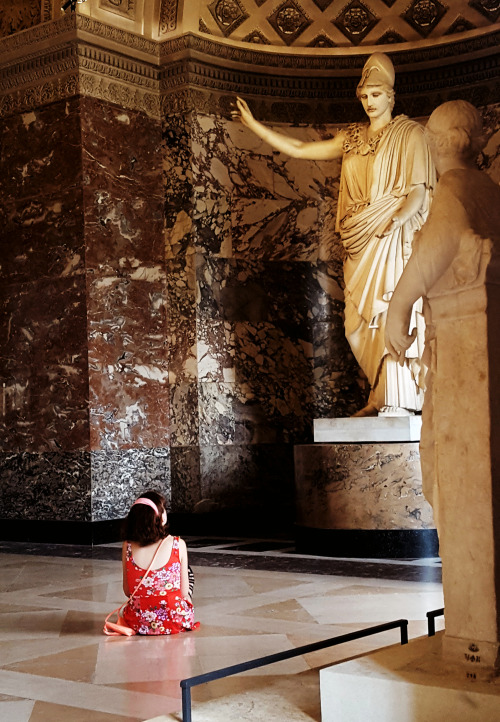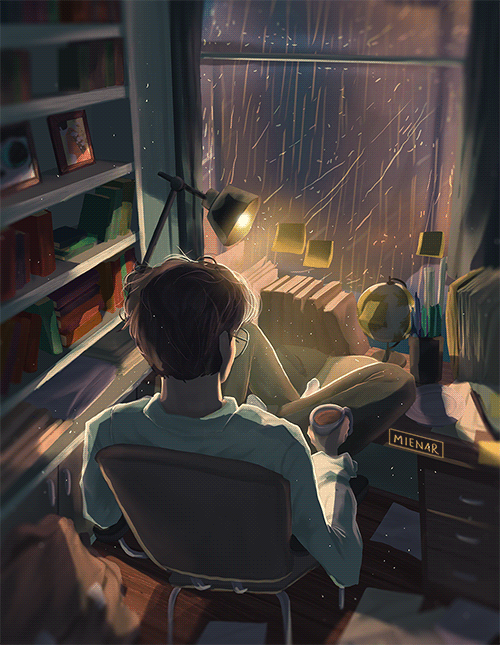You Must Insist On Being Curious. Curious Is What We Should Be. Ask Questions, Research, Know. being
you must insist on being curious. curious is what we should be. ask questions, research, know. being ignorant is not cool or trendy. fill your brain with knowledge.
More Posts from Chaos3612 and Others
Can we as millennials and gen-z’s collectively agree that NObody Cares about elbows on the table like Why was that Ever A Problem for Anyone?? We can chill right?
i love angry women. if ur a woman and ur fucking pissed off i love you

Throwback to last year at the Louvre when I saw a little girl sitting on the ground looking up to the statue of the goddess Athena. Probably the most Renaissance-like and powerful picture I ever took.

Orbital path of asteroid near miss in 2002. Yah, that’s how close we came to nuclear winter and possible total destruction.

zoned out
instagram | shop | commission info
This is a video of an Oksapmin woman demonstrating the Oksapmin base-27 counting system. The Oksapmin people of New Guinea use body part counting as a base for their numeral system (which may sound wild and exotic, but is really just a more detailed version of what we do, most anthropologists think base-10 number systems come from humans’ having 10 fingers) starting with the thumb, going up the arm and head to the nose (the 14th number) and going down the other side of the body to the pinky finger of the other hand (the 27th number). It does not matter which side you start counting on, so counting from right-to-left or left-to-right makes no difference.
And if that’s not the coolest thing you’ve ever heard, I don’t know what to tell ya


Littlewood polynomials are polynomials all of whose coefficients are either +1 or −1 (so even 0 is not allowed). If you take all Littlewood polynomials up to a certain degree, calculate all their (complex) roots, and plot those roots in the complex plane, then you get a beautiful fractal-like structure above.
The image is slightly misleading, because the “holes” on the unit circle tend to completely fill in if the degree goes up. Intuitively, the holes mean that complex numbers on the unit circle that are close to low-degree roots of unity are hard to approximate by low-degree Littlewood polynomials (unless they already are roots of unity).
In particular the structure at the edge of the ring is deeply interesting. Notice the familiarity with the dragon curve?
Remember the Women Who Made #Apollo50th Possible
As the world celebrates the 50th anniversary of the historic Moon landing, we remember some of the women whose hard work and ingenuity made it possible. The women featured here represent just a small fraction of the enormous contributions made by women during the Apollo era.
Margaret Hamilton, Computer Programmer

Margaret Hamilton led the team that developed the building blocks of software engineering — a term that she coined herself. Her systems approach to the Apollo software development and insistence on rigorous testing was critical to the success of Apollo. In fact, the Apollo guidance software was so robust that no software bugs were found on any crewed Apollo missions, and it was adapted for use in Skylab, the Space Shuttle and the first digital fly-by-wire systems in aircraft.
In this photo, Hamilton stands next to a stack of Apollo Guidance Computer source code. As she noted, “There was no second chance. We all knew that.”
Katherine Johnson, Aerospace Technologist

As a very young girl, Katherine Johnson loved to count things. She counted everything, from the number of steps she took to get to the road to the number of forks and plates she washed when doing the dishes.
As an adult, Johnson became a “human computer” for the National Advisory Committee for Aeronautics, which in 1958, became NASA. Her calculations were crucial to syncing Apollo’s Lunar Lander with the Moon-orbiting Command and Service Module. “I went to work every day for 33 years happy. Never did I get up and say I don’t want to go to work.“
Judy Sullivan, Biomedical Engineer

This fabulous flip belongs to biomedical engineer Judy Sullivan, who monitored the vital signs of the Apollo 11 astronauts throughout their spaceflight training via small sensors attached to their bodies. On July 16, 1969, she was the only woman in the suit lab as the team helped Neil Armstrong suit up for launch.
Sullivan appeared on the game show “To Tell the Truth,” in which a celebrity panel had to guess which of the female contestants was a biomedical engineer. Her choice to wear a short, ruffled skirt stumped everyone and won her a $500 prize. In this photo, Sullivan monitors a console during a training exercise for the first lunar landing mission.
Billie Robertson, Mathematician

Billie Robertson, pictured here in 1972 running a real-time go-no-go simulation for the Apollo 17 mission, originally intended to become a math teacher. Instead, she worked with the Army Ballistic Missile Agency, which later became rolled into NASA. She created the manual for running computer models that were used to simulate launches for the Apollo, Skylab and Apollo Soyuz Test Project programs.
Robertson regularly visited local schools over the course of her career, empowering young women to pursue careers in STEM and aerospace.
Mary Jackson, Aeronautical Engineer

In 1958, Mary Jackson became NASA’s first African-American female engineer. Her engineering specialty was the extremely complex field of boundary layer effects on aerospace vehicles at supersonic speeds.
In the 1970s, Jackson helped the students at Hampton’s King Street Community center build their own wind tunnel and use it to conduct experiments. “We have to do something like this to get them interested in science,” she said for the local newspaper. “Sometimes they are not aware of the number of black scientists, and don’t even know of the career opportunities until it is too late.”
Ethel Heinecke Bauer, Aerospace Engineer

After watching the launch of Sputnik in October 1957, Ethel Heinecke Bauer changed her major to mathematics. Over her 32 years at NASA, she worked at two different centers in mathematics, aerospace engineering, development and more.
Bauer planned the lunar trajectories for the Apollo program including the ‘free return’ trajectory which allowed for a safe return in the event of a systems failure — a trajectory used on Apollo 13, as well as the first three Apollo flights to the Moon. In the above photo, Bauer works on trajectories with the help of an orbital model.
Follow Women@NASA for more stories like this one, and make sure to follow us on Tumblr for your regular dose of space: http://nasa.tumblr.com.
-
 smallmatchalatte liked this · 2 years ago
smallmatchalatte liked this · 2 years ago -
 alfacenturi liked this · 2 years ago
alfacenturi liked this · 2 years ago -
 peppersupreme reblogged this · 2 years ago
peppersupreme reblogged this · 2 years ago -
 untitledauntitled12 reblogged this · 3 years ago
untitledauntitled12 reblogged this · 3 years ago -
 hopperslatte liked this · 3 years ago
hopperslatte liked this · 3 years ago -
 bitsofwarmth reblogged this · 4 years ago
bitsofwarmth reblogged this · 4 years ago -
 bitsofwarmth liked this · 4 years ago
bitsofwarmth liked this · 4 years ago -
 amazsylwia reblogged this · 4 years ago
amazsylwia reblogged this · 4 years ago -
 lickrock reblogged this · 4 years ago
lickrock reblogged this · 4 years ago -
 long-lasting-memories reblogged this · 4 years ago
long-lasting-memories reblogged this · 4 years ago -
 fireis-catching reblogged this · 4 years ago
fireis-catching reblogged this · 4 years ago -
 lickrock liked this · 4 years ago
lickrock liked this · 4 years ago -
 ms-moodie reblogged this · 4 years ago
ms-moodie reblogged this · 4 years ago -
 ms-moodie liked this · 4 years ago
ms-moodie liked this · 4 years ago -
 herrbertrandsstudy reblogged this · 4 years ago
herrbertrandsstudy reblogged this · 4 years ago -
 fleurdet reblogged this · 4 years ago
fleurdet reblogged this · 4 years ago -
 ohwonderlands liked this · 4 years ago
ohwonderlands liked this · 4 years ago -
 sinefineignis liked this · 4 years ago
sinefineignis liked this · 4 years ago -
 curlysara22 reblogged this · 4 years ago
curlysara22 reblogged this · 4 years ago -
 ivan-hristov reblogged this · 4 years ago
ivan-hristov reblogged this · 4 years ago -
 cyndynamite reblogged this · 4 years ago
cyndynamite reblogged this · 4 years ago -
 disapprovinghmm reblogged this · 4 years ago
disapprovinghmm reblogged this · 4 years ago -
 hiljadu-verzija-mene liked this · 4 years ago
hiljadu-verzija-mene liked this · 4 years ago -
 shareeny liked this · 4 years ago
shareeny liked this · 4 years ago -
 lucy-hime-sama liked this · 4 years ago
lucy-hime-sama liked this · 4 years ago -
 theskyspiritstalentshow reblogged this · 4 years ago
theskyspiritstalentshow reblogged this · 4 years ago -
 tacticianrobin liked this · 4 years ago
tacticianrobin liked this · 4 years ago -
 karambito reblogged this · 4 years ago
karambito reblogged this · 4 years ago -
 xrinsu liked this · 4 years ago
xrinsu liked this · 4 years ago -
 valverasofia liked this · 4 years ago
valverasofia liked this · 4 years ago -
 noct reblogged this · 4 years ago
noct reblogged this · 4 years ago

Small and angry.PhD student. Mathematics. Slow person. Side blog, follow with @talrg.
213 posts



